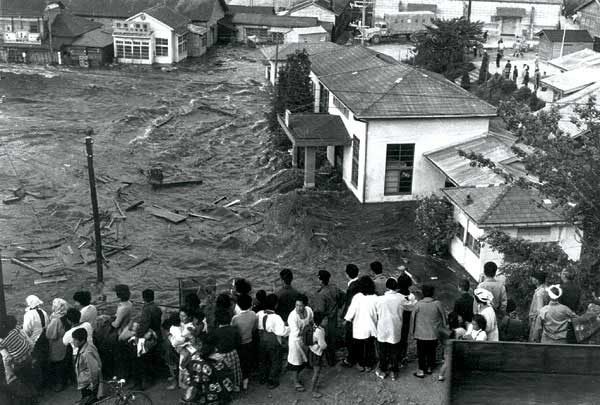Earthquakes, also known as seismic events, are vibrations on the Earth’s surface resulting from the sudden release of energy in the Earth’s crust, generating seismic waves. On the Earth’s surface, earthquakes manifest as shaking and shifting or breaking of the ground. When the epicenter of a significant earthquake is offshore, the seabed can shift enough to trigger tsunamis. Earthquakes can also initiate landslides and volcanic activity.
Each year, the National Earthquake Information Center (NEIC) of the United States Geological Survey (USGS) records approximately 500,000 to 1 million detectable seismic events. Of these, around 100,000 are felt by people, and about 1,000 result in damage.
The Great Disaster of the 20th Century
On May 22, 1960, a massive earthquake struck the city of Valdivia, Chile. The earthquake lasted approximately 10 minutes, with a magnitude of 9.5 on the Richter scale. This earthquake originated from a fault line measuring about 800 km long. Many other earthquakes have been documented throughout human history, but this one remains the largest since accurate measurements of intensity began in the early 1900s. Therefore, it is still regarded as the most devastating earthquake in human history.

The earthquake in Chile in 1960 is considered the most devastating in human history. (Image: Noaa)
The 1960 earthquake in Chile was actually a series of powerful earthquakes that affected the country from May 21 to June 6, 1960. The first earthquake occurred on May 21 in the waters near the port city of Puerto Montt. This earthquake was unusually strong, with high intensity lasting for a long duration and over a wide area. Shortly after the first quake, the intensity of the shaking increased. It lasted until May 23, peaking at 7:00 PM on May 22. According to scientists, the epicenter of the 1960 earthquake in Chile was located in the Pacific trench near Puerto Montt.
Accompanying Disasters
This mega earthquake also triggered a series of tsunamis that severely impacted southern Chile, Hawaii, Japan, the Philippines, eastern New Zealand, and southeastern Australia. At Corral, the main port of Valdivia, the water level rose by 4 meters before it began to recede. At 4:30 PM, an 8-meter wave struck the Chilean coast, primarily between Concepción and Chiloé. Subsequently, several local tsunamis devastated the Chilean coastline, with waves reaching up to 25 meters high. Hundreds of people lost their lives.

The earthquake also triggered numerous tsunamis causing heavy damage in many countries. (Image: Noaa)
Afterward, the tsunami crossed the Pacific Ocean at speeds of several hundred km/h, devastating Hilo, Hawaii, and resulting in 61 fatalities. It also claimed many lives in the Sanriku region of northeastern Honshu, Japan. The total death toll from the earthquake and tsunami was reported to be around 7,000 people.
The 1960 earthquake in Chile also caused numerous landslides in the steep valleys of the southern Andes. These landslides did not result in many casualties or significant economic damage as most occurred in uninhabited areas or only affected small roads. The subsidence also destroyed buildings and created flooded areas throughout. Many parts of the city were inundated, and the electricity and water systems of Valdivia were completely destroyed.

The 1960 earthquake in Chile also caused many landslides. (Image: Noaa)
Two days after the earthquake, the Cordón Caulle volcano erupted. This eruption was believed to have been triggered by the earthquake. It produced an ash column rising up to 6,000 meters and caused considerable damage. According to scientists, the energy released from the earthquake-tsunami-volcano disaster is estimated to be over 200 times greater than that of the atomic bomb dropped on Hiroshima, Japan, in 1945 during World War II.
Additionally, the consecutive disasters left 2 million people in Chile homeless. Chilean leaders estimated the damage caused by the earthquake to range from $400 to $800 million.


















































